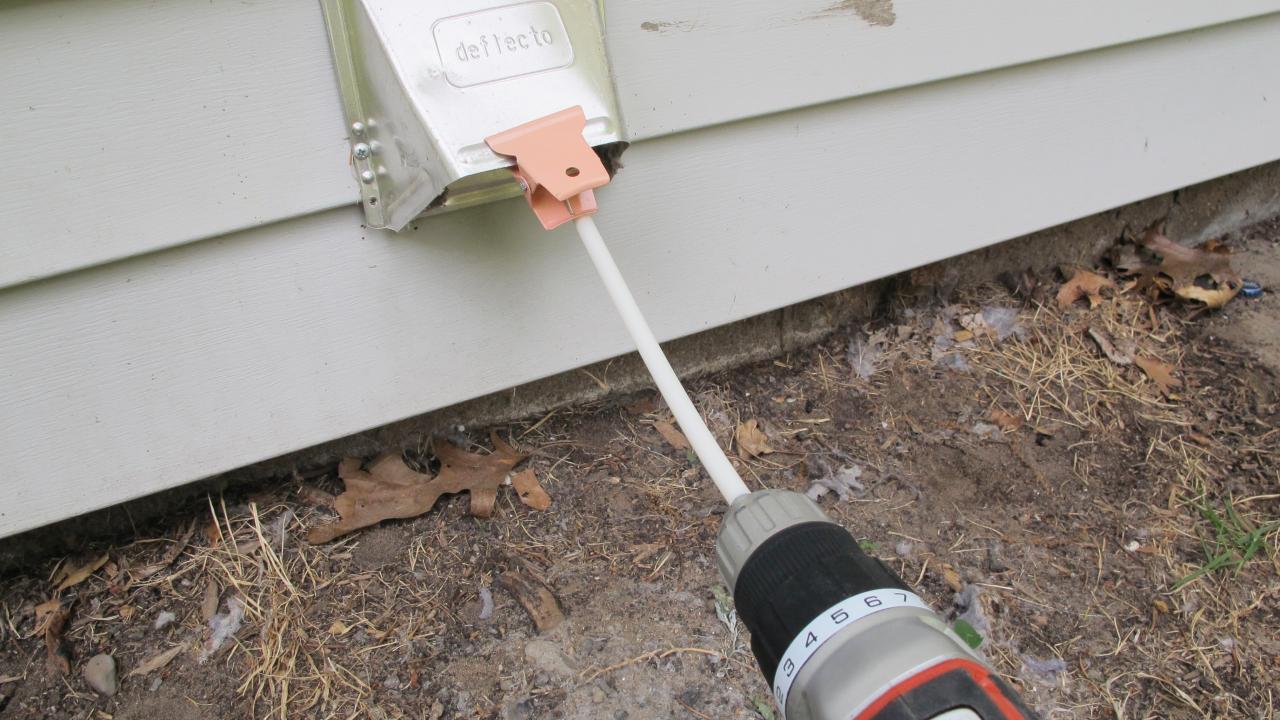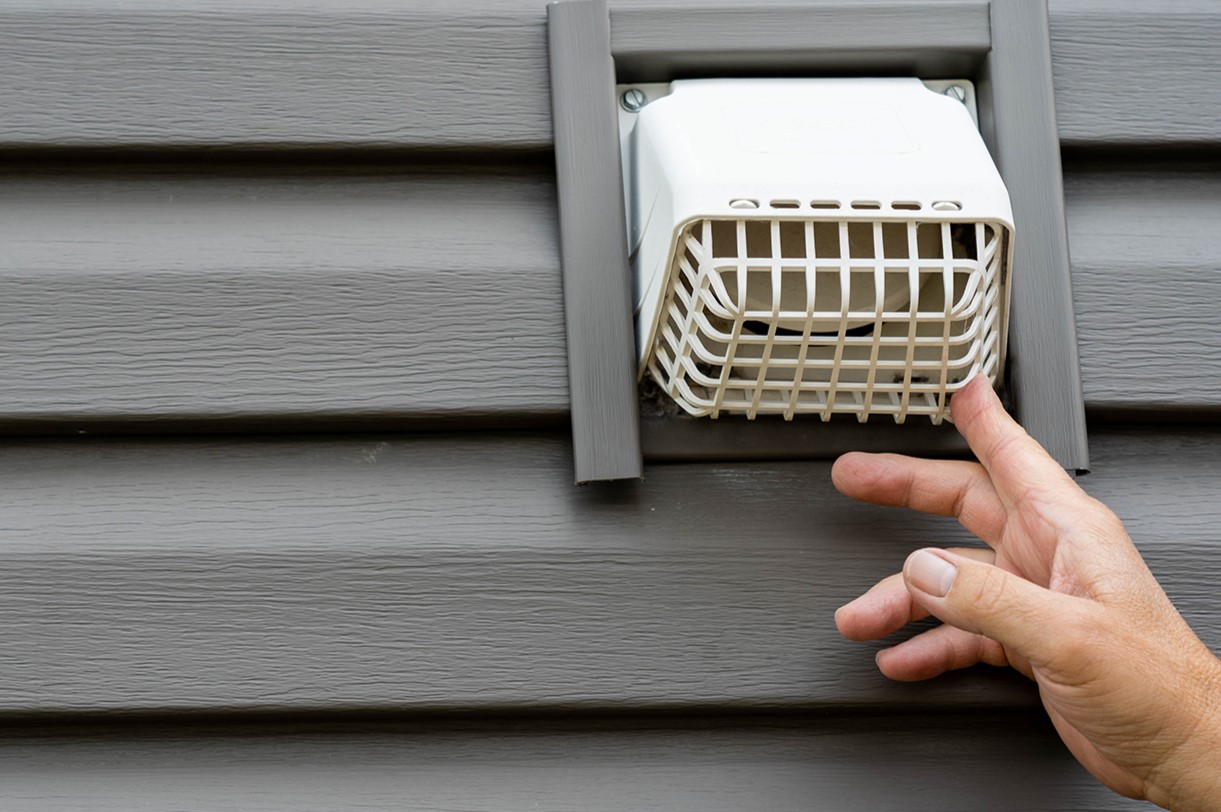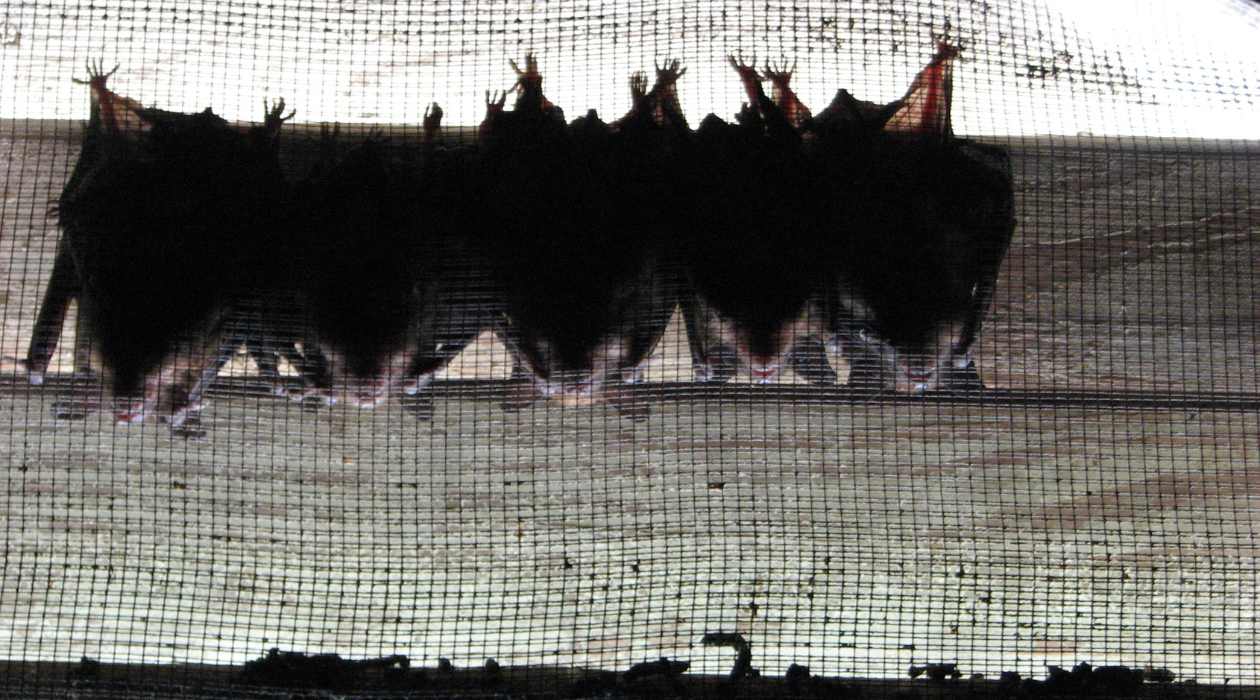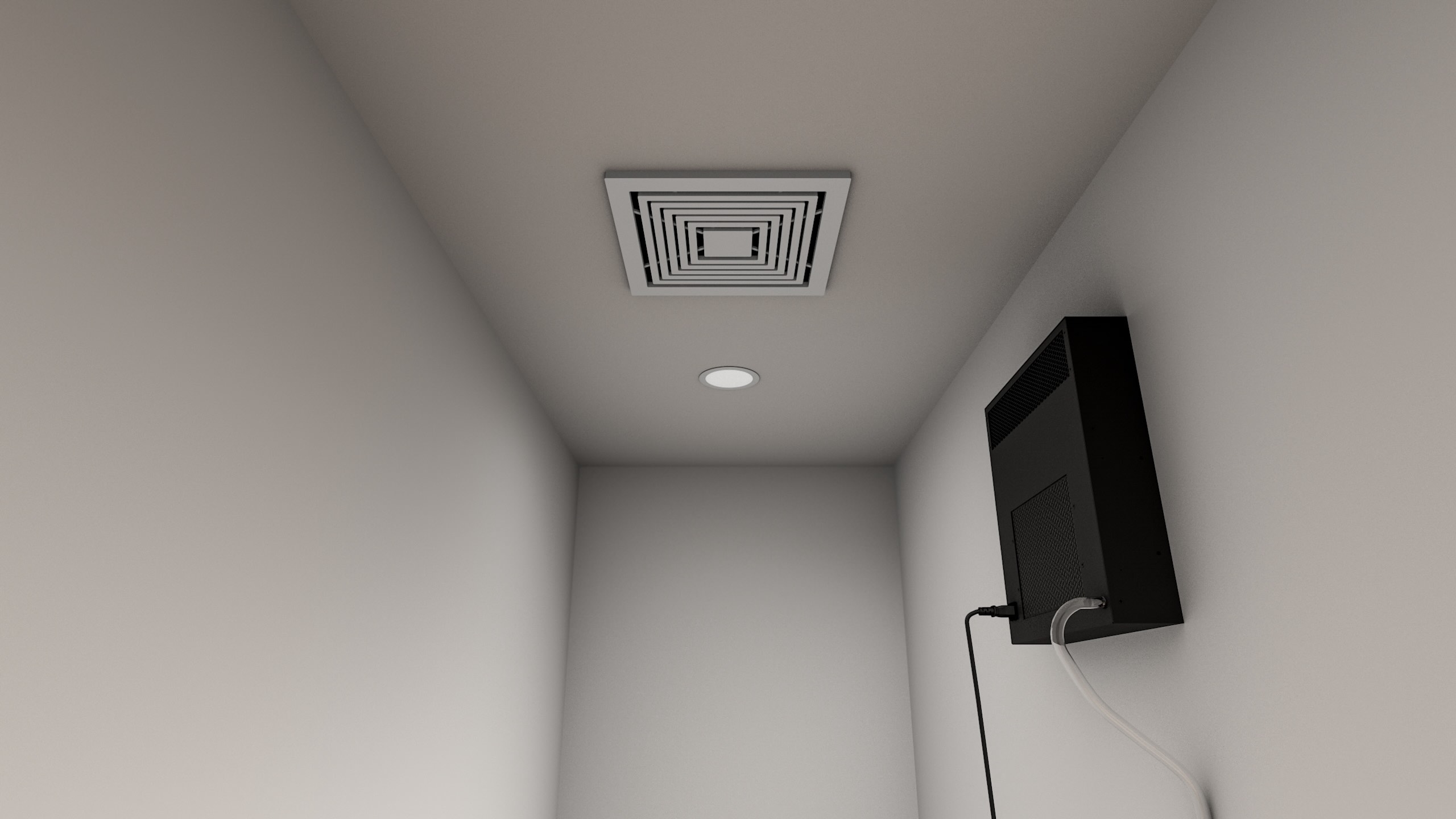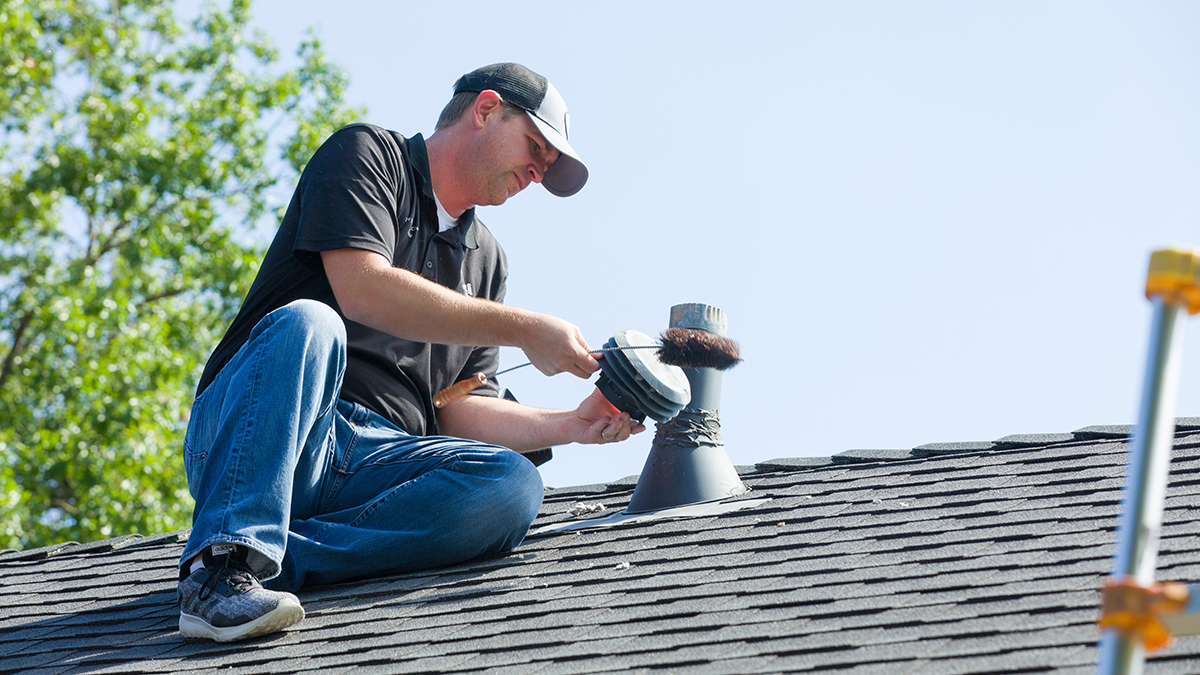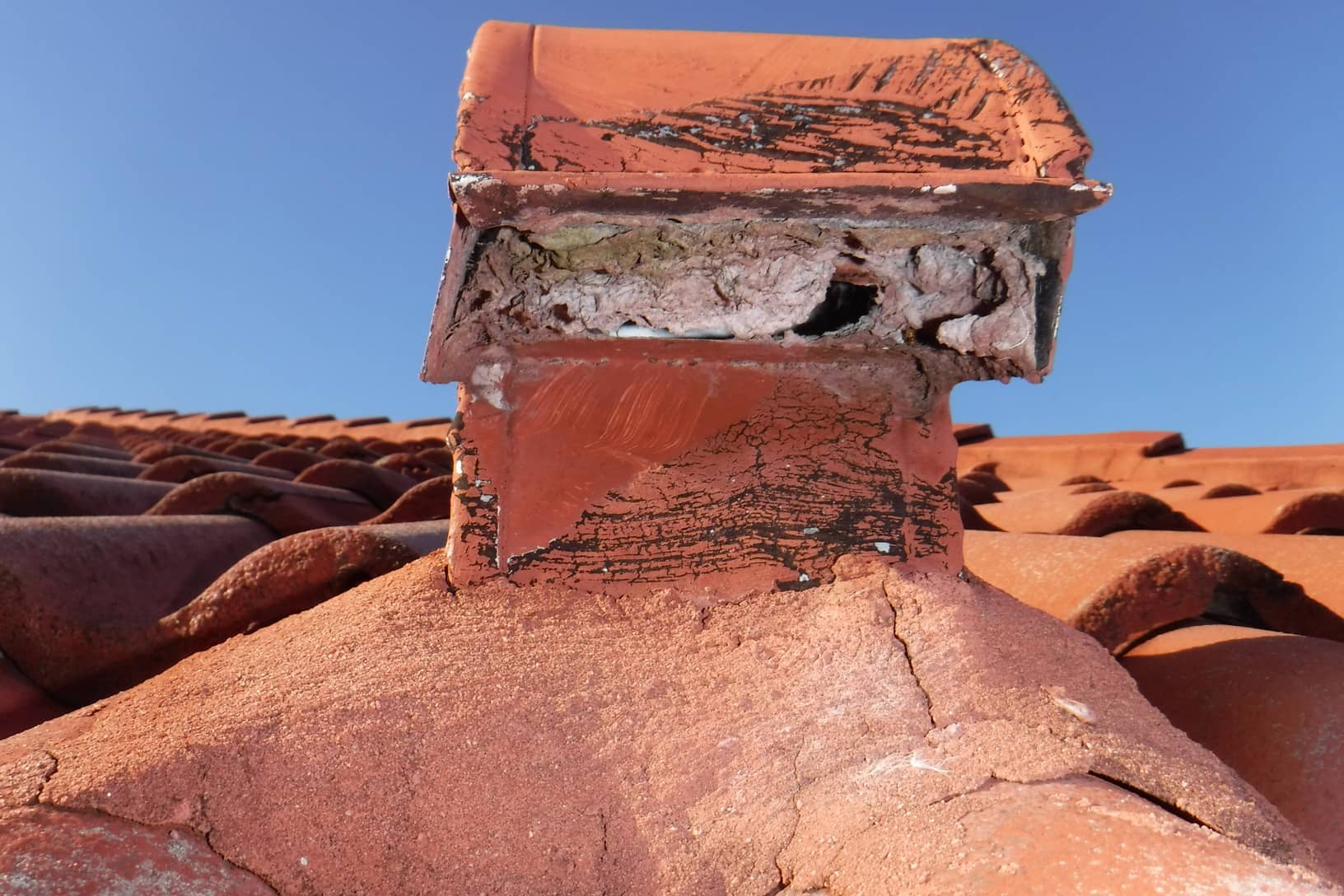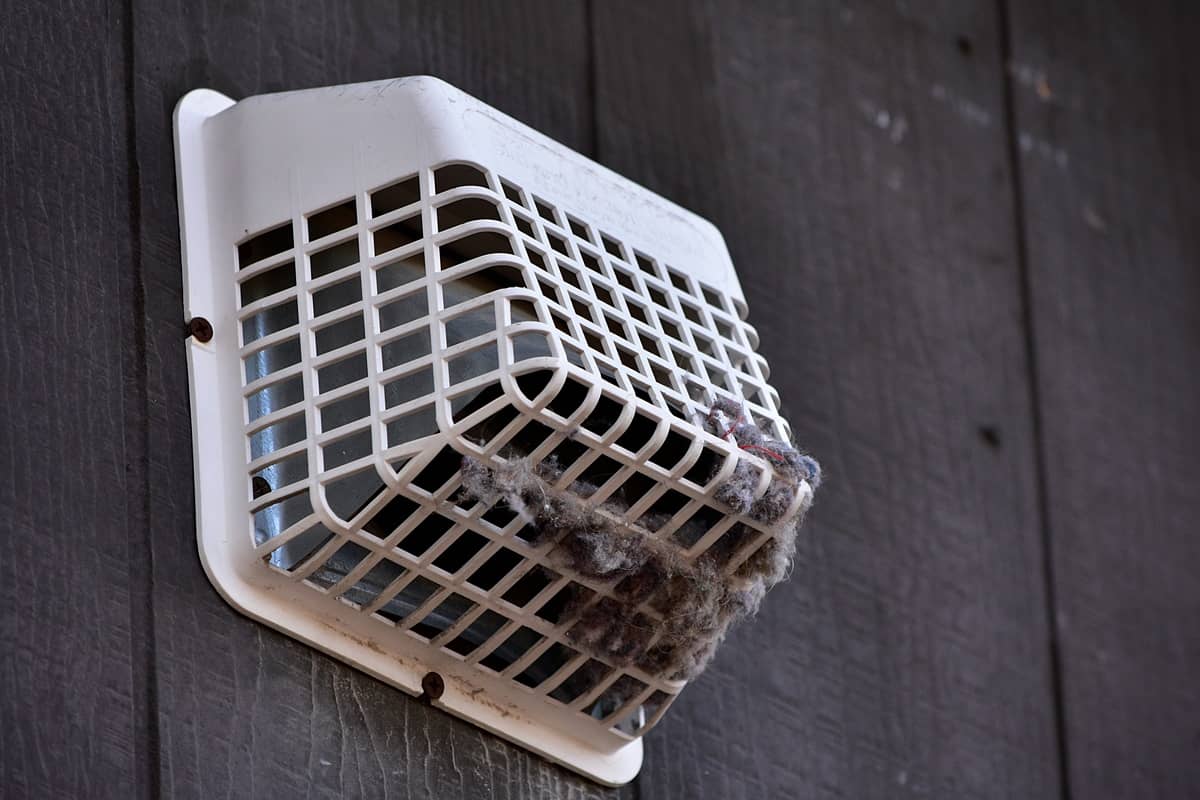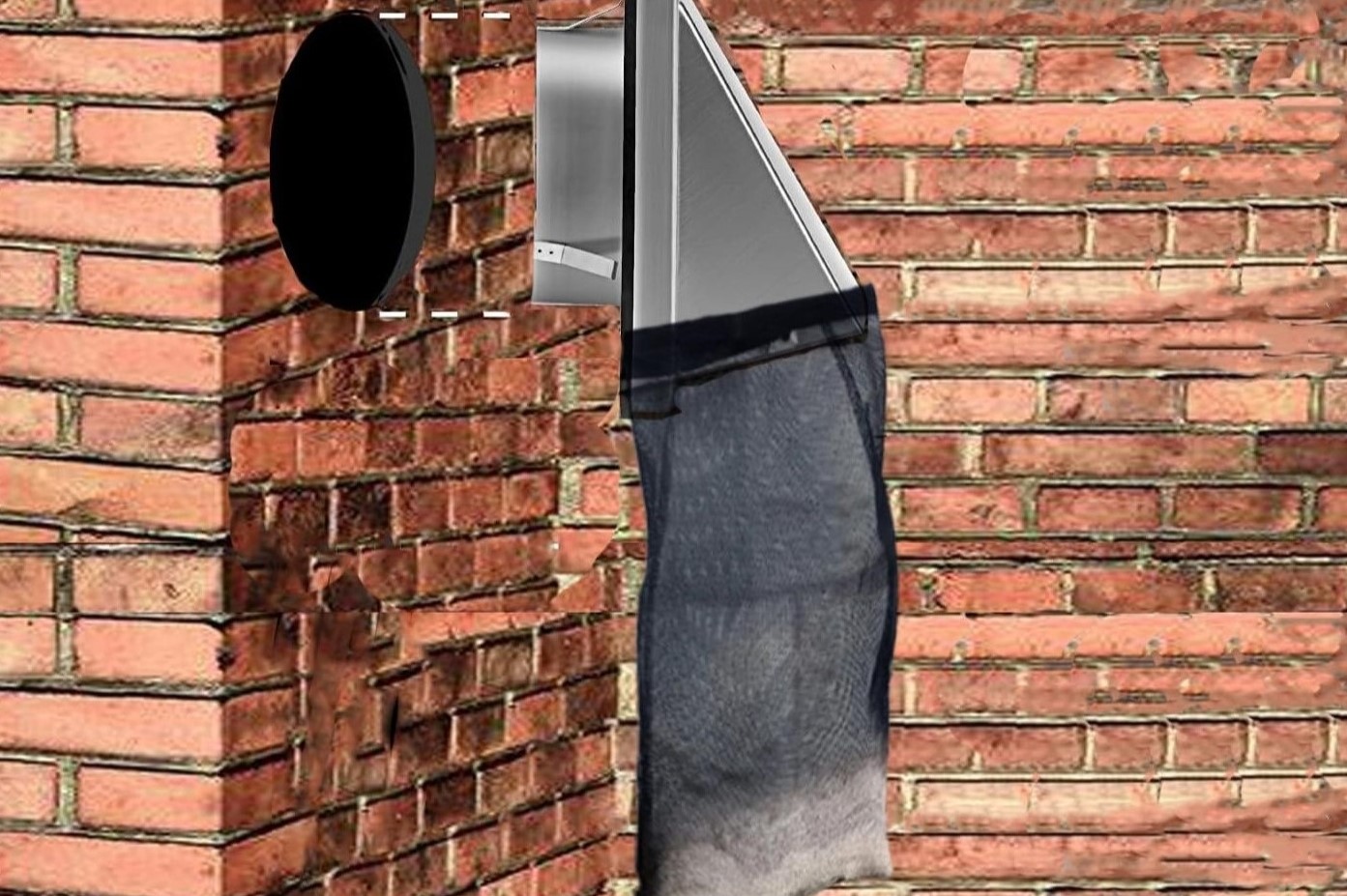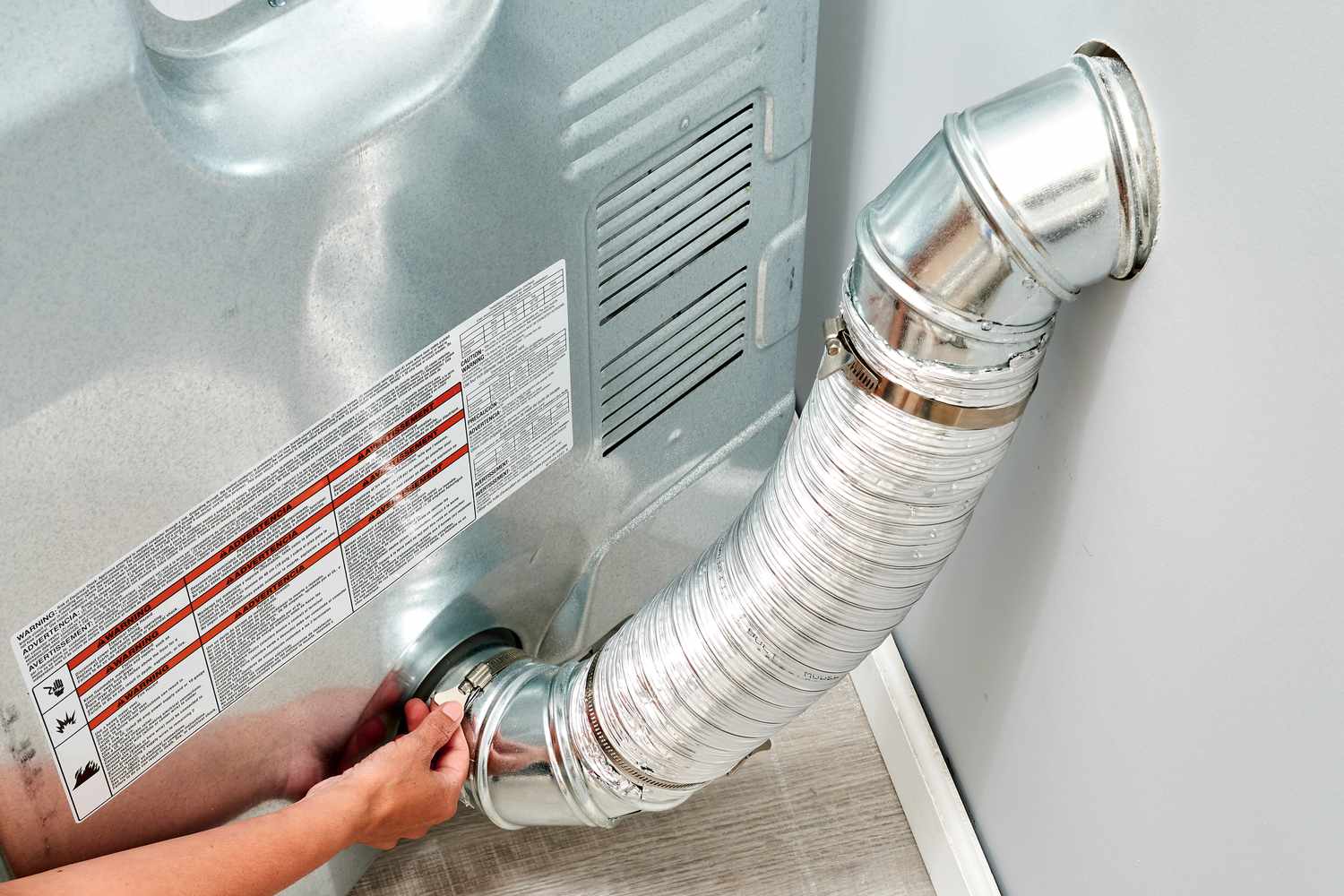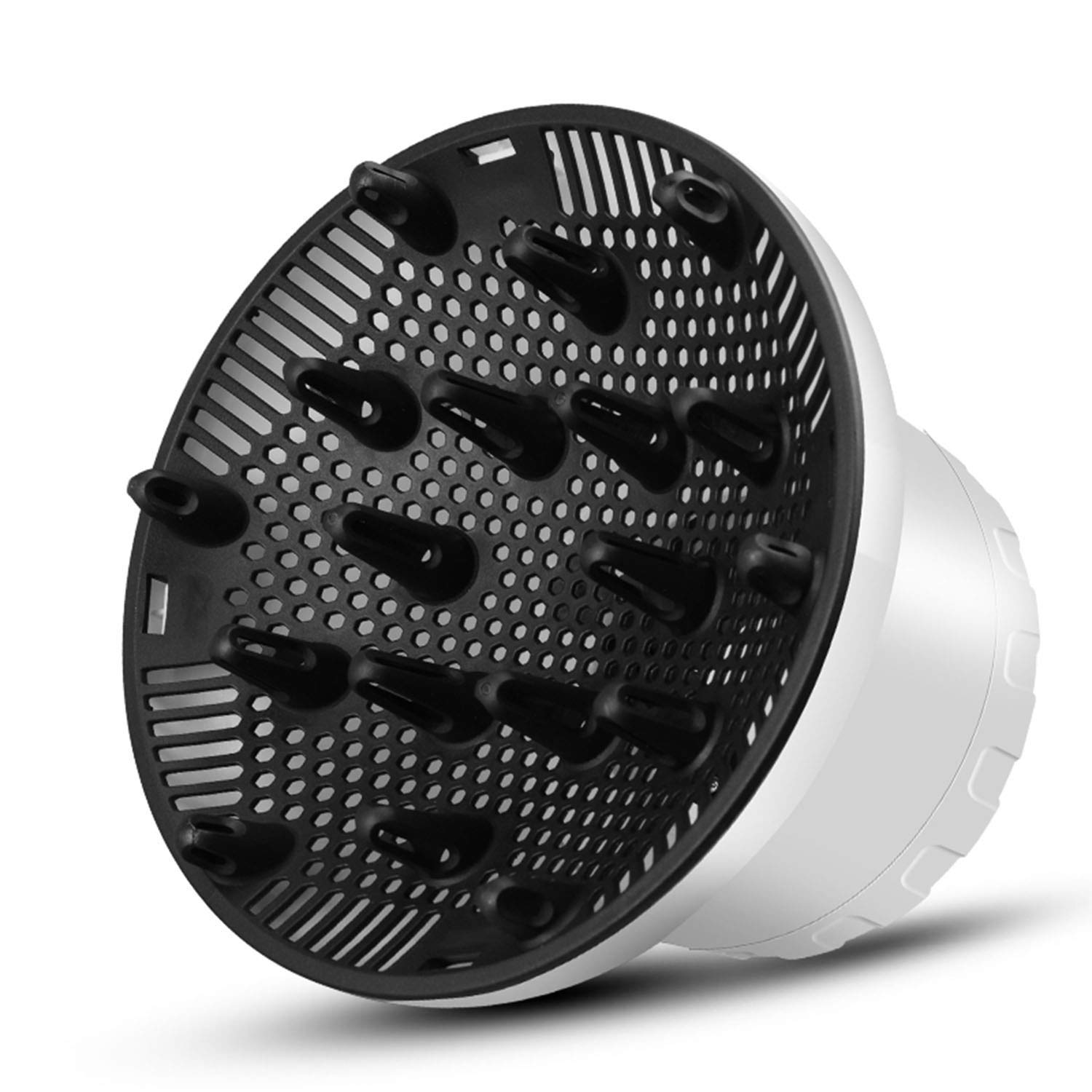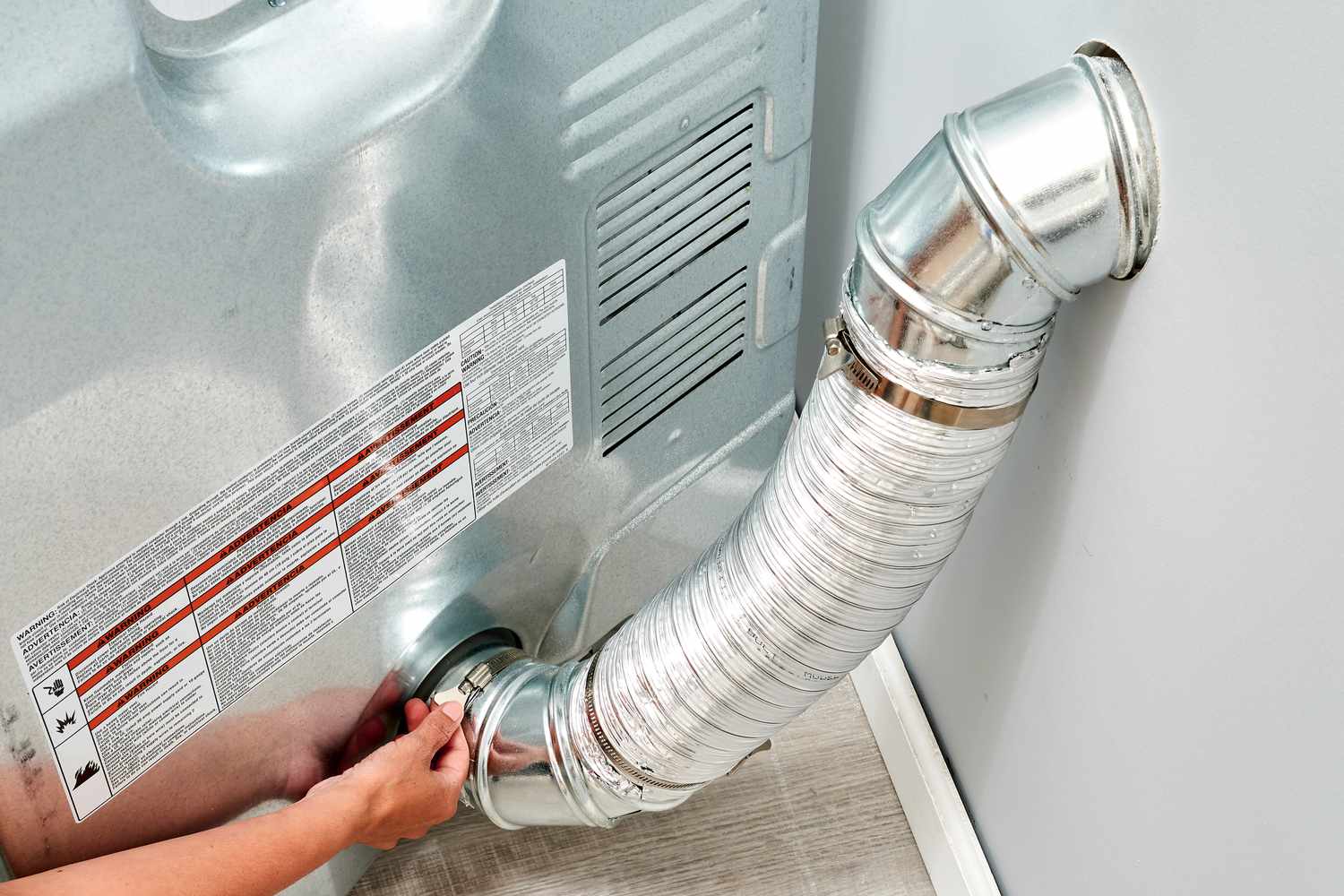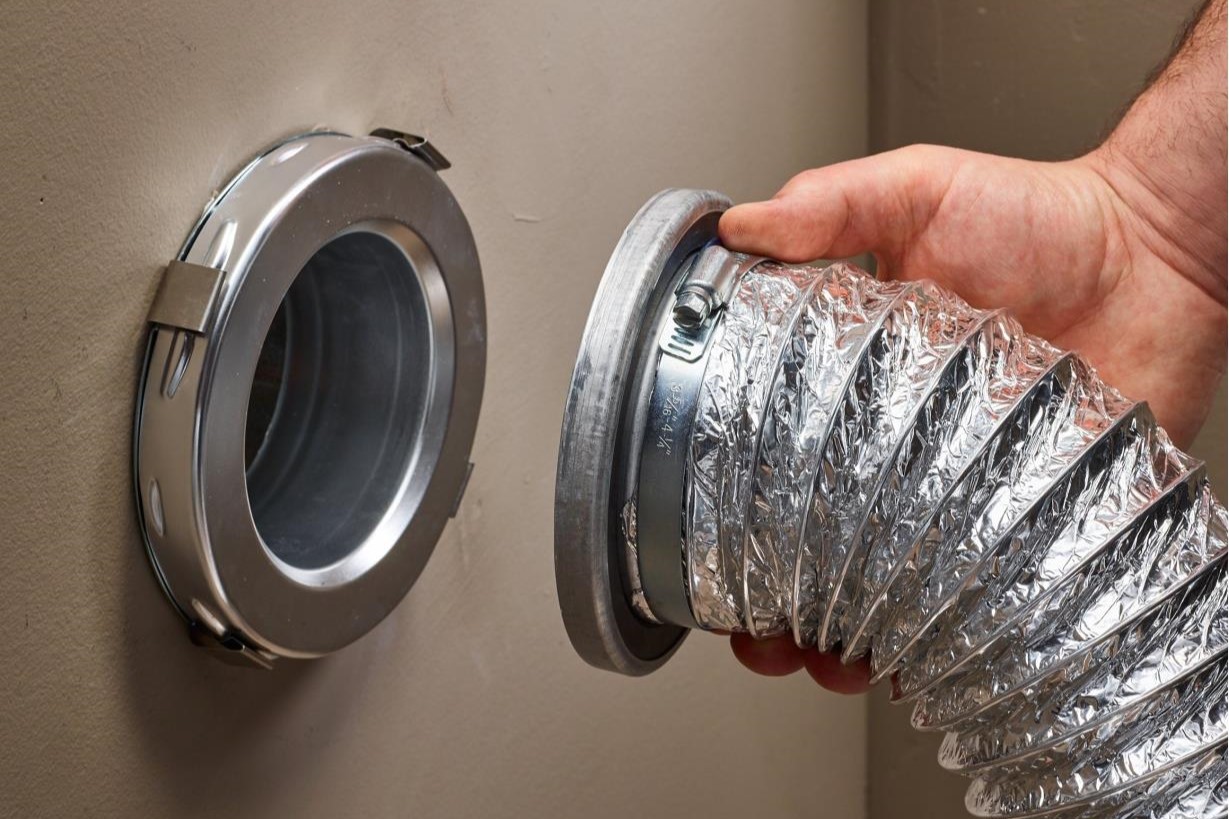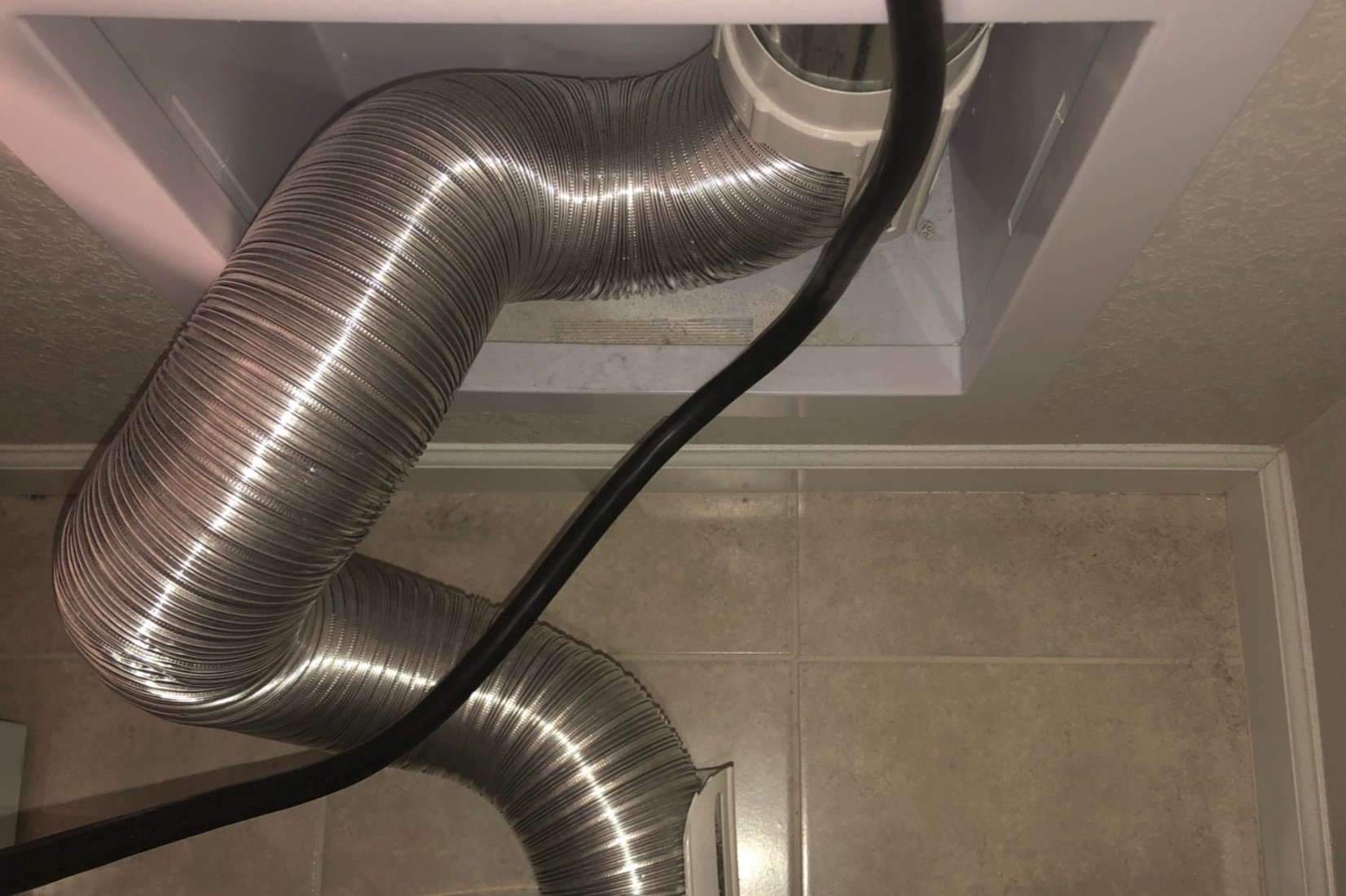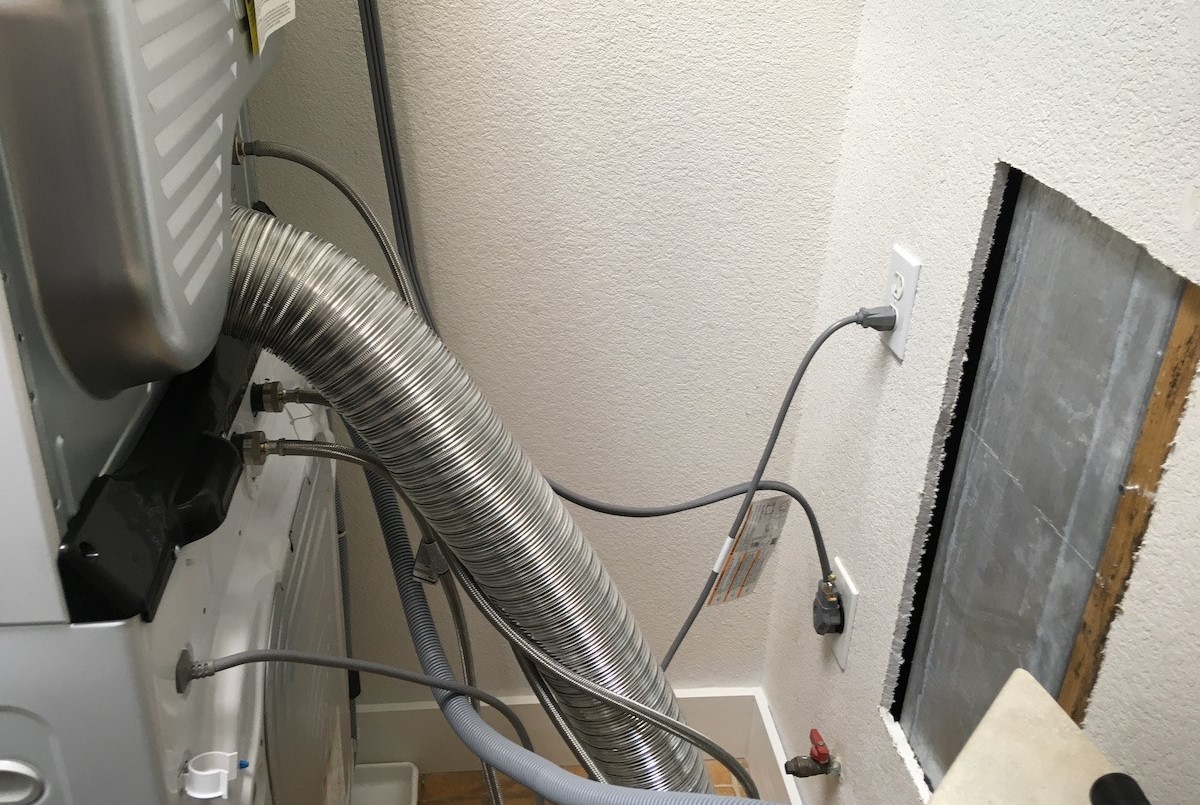Home>Home Maintenance>How To Remove An Animal From A Dryer Vent
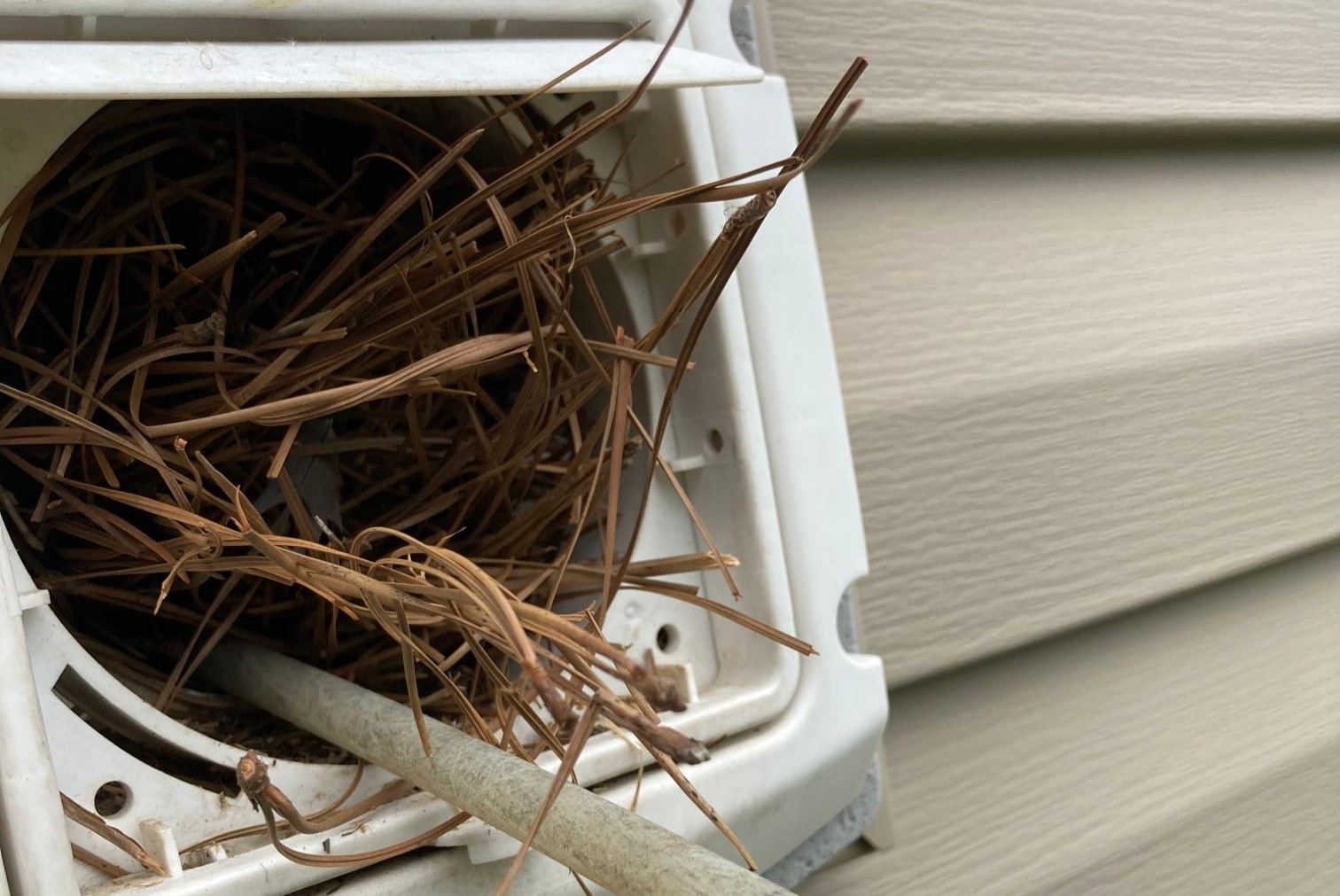

Home Maintenance
How To Remove An Animal From A Dryer Vent
Modified: March 6, 2024
Learn how to safely remove animals from your dryer vent with our easy home maintenance tips. Protect your home and prevent potential hazards.
(Many of the links in this article redirect to a specific reviewed product. Your purchase of these products through affiliate links helps to generate commission for Storables.com, at no extra cost. Learn more)
Introduction:
Welcome to our comprehensive guide on how to remove an animal from a dryer vent. Discovering an animal trapped in your dryer vent can be distressing, but rest assured, we’re here to provide you with the knowledge and steps needed to handle this situation safely and effectively.
Dryer vents are convenient spaces for animals to seek refuge due to their warmth and protection, especially during colder months. Unfortunately, this can lead to blockages within the vent system, causing issues with your dryer’s performance and potentially posing a fire hazard. It’s crucial to address this situation promptly and with the necessary precautions in mind.
In this guide, we will explain why animals get stuck in dryer vents, how to identify signs of an animal’s presence, safety precautions to take before attempting removal, and a step-by-step process to safely remove the animal. We will also provide tips on preventative measures to help you avoid future encounters with wildlife in your dryer vent.
Before we dive into the specifics, it’s important to note that if you are unsure or uncomfortable in dealing with this situation on your own, it’s advisable to contact a professional wildlife removal service. They are experienced in handling these situations safely and humanely.
Now, let’s explore why animals end up in dryer vents and the indicators that may suggest their presence.
Key Takeaways:
- Animals seek warmth and shelter in dryer vents, causing potential hazards. Safely remove them by following steps, prioritizing safety, and implementing preventive measures to avoid future intrusions.
- Identify signs of animals in dryer vents, such as unusual noises and reduced dryer performance. Take precautions, seek professional help if needed, and ensure a safe and humane removal process.
Read more: How To Remove Bees From Chimney
Why Animals Get Stuck in Dryer Vents:
Dryer vents are an appealing shelter for animals due to several reasons. Understanding why animals get stuck in dryer vents can help you take necessary precautions to prevent future incidents.
1. Warmth and Protection: Dryer vents provide a warm and secure environment for animals, especially during colder seasons. The warm air flowing through the vent acts as a cozy refuge, making it an attractive spot for wildlife seeking shelter.
2. Nesting Opportunities: Animals, such as birds, rodents, and even small mammals, may view dryer vents as potential nesting sites. The small, enclosed space offers protection from predators and unfavorable weather conditions, making it an ideal location to build a nest and raise their young.
3. Easy Access: In some cases, animals accidentally stumble into dryer vents while exploring their surroundings. Open or damaged vent covers, especially those near ground level, can serve as entry points for curious wildlife.
4. Debris and Debris Attractants: Dryer vents can accumulate debris such as lint, leaves, and twigs, which can attract animals looking for nesting materials or food sources. The presence of debris can make the vent more enticing and increase the likelihood of animals getting stuck.
5. Urbanization and Habitat Loss: As urban areas expand and encroach upon natural habitats, animals may seek alternative shelters and resources. Dryer vents, being conveniently situated in residential areas, can unwittingly become substitute homes for wildlife.
It is important to remember that animals entering and getting stuck in dryer vents is not only a nuisance for homeowners. It can also pose serious risks, such as obstructed airflow, increased energy consumption, potential damage to the dryer unit, and even the threat of a house fire due to lint buildup. Therefore, taking steps to address this issue is necessary for both the well-being of animals and the safety of your home.
Next, we will discuss the signs that may indicate an animal is trapped in your dryer vent.
Signs of an Animal in the Dryer Vent:
Identifying signs of an animal in your dryer vent is crucial in addressing the situation promptly. Here are some common indicators that may suggest the presence of wildlife:
1. Unusual Noises: If you hear scratching, squeaking, or other unfamiliar sounds coming from the dryer vent or the surrounding area, it could indicate the presence of an animal. The trapped animal may be trying to escape or move around, causing noticeable noises.
2. Foul Odors: A strong, unpleasant odor emanating from your dryer vent could be a sign that an animal is trapped inside. The accumulation of droppings, urine, or the animal’s remains can cause a distinct smell that lingers around the vent area.
3. Reduced Dryer Performance: If you notice that your dryer is taking longer than usual to dry clothes or isn’t heating properly, it could be a result of an animal blocking the ventilation system. The obstruction caused by the trapped animal can disrupt the airflow, hindering the drying process.
4. Nesting Materials or Debris: Animals that have successfully made a nest within your dryer vent may bring in nesting materials such as leaves, twigs, or fabric. If you notice these materials or other debris in or around the vent area, it could suggest an animal’s presence.
5. Visible Damage or Disturbances: Animals attempting to enter or exit the dryer vent may cause visible damage to the vent cover or surrounding area. Look for signs of scratches, chew marks, or displaced vent covers that could indicate animal activity.
6. Animal Sightings: In some cases, you may have a direct visual confirmation of an animal’s presence. If you spot an animal entering or exiting the dryer vent, it’s essential to take immediate action to ensure its safe removal.
It’s important to note that some of these signs could also indicate other issues with your dryer vent system. Therefore, it’s advisable to conduct a thorough inspection or seek professional assistance to confirm the presence of an animal before proceeding with removal.
In the next section, we will discuss the safety precautions you should take before attempting to remove an animal from the dryer vent.
Safety Precautions Before Removing an Animal:
Prior to attempting to remove an animal from your dryer vent, it’s crucial to prioritize safety for both yourself and the trapped creature. Take the following precautions to ensure a safe and effective removal process:
1. Turn Off the Dryer: Before starting any removal procedure, turn off the dryer and unplug it from the power source. This will prevent any accidental activation of the dryer while you are working, reducing the risk of injury to yourself or the animal.
2. Wear Protective Gear: When dealing with trapped animals, it’s important to protect yourself from any potential hazards. Wear thick gloves to guard against bites or scratches, and consider wearing safety goggles to shield your eyes from debris or droppings that may be disturbed during the process.
3. Ensure Proper Ventilation: Work in a well-ventilated area to minimize exposure to any potential allergens or harmful gases that may be present in the dryer vent. If possible, open windows or use fans to improve airflow and reduce the concentration of airborne particles.
4. Use Appropriate Tools: Depending on the situation, you may need to utilize tools to safely remove the animal. Long and flexible objects, such as a broomstick or a fishing rod, can be helpful in gently guiding the animal out of the vent. Avoid using sharp or excessive force, as it may cause harm to the creature or damage to the vent system.
5. Never Use Fire or Harmful Substances: Under no circumstances should you attempt to smoke out or use chemicals or animal repellents to force the animal out of the dryer vent. These methods can harm both the animal and your respiratory system, and they could potentially lead to a fire hazard.
6. Consider Seeking Professional Help: If you are uncertain about safely removing the animal yourself or if you encounter a more challenging situation, it’s advisable to contact a professional wildlife removal service. They have the necessary expertise and equipment to handle these situations safely and effectively.
Remember, wild animals may become frightened or aggressive when trapped, so it’s important to exercise caution throughout the removal process. By following these safety precautions, you can ensure a smooth and secure experience for both you and the trapped animal.
Now that we’ve covered the necessary safety measures, let’s proceed to the step-by-step guide on removing an animal from the dryer vent.
To remove an animal from a dryer vent, turn off the dryer and carefully remove the vent cover. Use a flashlight to locate the animal and gently coax it out using a broom or a long stick. Once the animal is out, secure the vent cover back in place.
Step-by-Step Guide to Removing an Animal from a Dryer Vent:
Removing an animal from a dryer vent requires patience, caution, and a systematic approach. Follow the steps below to safely and effectively remove the trapped creature:
1. Assess the Situation: Begin by confirming the presence of an animal in the dryer vent. Listen for scratching noises, observe signs of damage, or if possible, visually confirm the animal’s presence. Identifying the animal will help inform your approach for removal.
2. Prepare the Area: Clear the immediate area around the dryer vent, removing any obstructions or objects that may impede your access. This includes removing any flammable materials to minimize the risk of a fire hazard.
3. Create an Exit Route: Open doors or windows near the dryer vent to provide the animal with an alternative escape route. This will encourage the creature to leave the vent and find its own way out of your home.
4. Use Light and Sound: Shine a bright light towards the opening of the vent to create an unappealing environment for the animal. Additionally, you can play loud music or make loud noises near the vent to further discourage the animal from staying inside.
5. Gradually Encourage Exit: Gently tap on the dryer vent, starting from the furthest point and working your way towards the opening. This will create vibrations and alert the animal to the pathway leading out of the vent.
6. Provide Assistance if Needed: In some cases, the animal may require further assistance to exit the vent. Using a long and flexible object, such as a broomstick or fishing rod, gently nudge the animal towards the open exit route. Be patient and avoid causing any harm or unnecessary stress to the animal.
7. Secure Vent Openings: Once the animal has successfully exited the vent, secure the openings to prevent future re-entry. Replace or repair any damaged vent covers and consider installing mesh or screens to deter wildlife from reentering the vent.
8. Check for Any Injuries or Damage: After the removal, carefully inspect the vent system and surrounding area for any signs of damage or required repairs. Address any issues to ensure the proper functioning of your dryer vent.
9. Clean and Sanitize: Thoroughly clean and sanitize the dryer vent and surrounding area to eliminate any remnants, droppings, or lingering odors left behind by the animal. This will help maintain a clean and hygienic environment.
10. Follow Preventive Measures: Implement preventive measures to reduce the likelihood of future animal encounters in your dryer vent. This includes regularly inspecting and cleaning the vent, installing vent covers, and keeping the area around the vent clear of debris.
By following these step-by-step instructions, you can safely remove an animal from your dryer vent and minimize the risks associated with wildlife intrusions. Remember, it’s essential to handle this situation with care and respect for both the animal and your own safety.
Now, let’s explore some preventive measures that can help keep animals out of your dryer vent in the future.
Preventative Measures to Keep Animals Out of Dryer Vents:
Taking proactive steps to prevent animals from entering your dryer vent can save you from the hassle of removing trapped creatures and protect the integrity of your vent system. Consider implementing the following preventative measures:
1. Install a Vent Cover: Invest in a high-quality vent cover or guard that is specifically designed to keep wildlife out. Look for covers with small mesh openings that deter animals from entering while allowing proper airflow for your dryer.
2. Regularly Inspect the Vent: Conduct routine inspections of your dryer vent system to identify any potential points of entry for animals. Check for loose or damaged vent covers, holes, or gaps that could serve as entryways.
3. Keep Surrounding Area Clear: Ensure there is no vegetation or debris blocking the area around the dryer vent. Trim any nearby trees or bushes that could provide easy access to the vent for animals to climb or jump in.
4. Clean the Vent Regularly: Regularly clean your dryer vent to remove lint, debris, and other materials that may attract animals. A clean and well-maintained vent is less likely to entice wildlife looking for nesting materials.
5. Secure Access Points: Seal any potential access points around the dryer vent, such as gaps in the wall or flooring. Use appropriate materials, such as caulk or wire mesh, to prevent animals from finding alternate ways to enter the vent system.
6. Educate Family Members: Educate all members of your household about the importance of keeping the dryer vent area clear and discouraging wildlife from approaching it. Emphasize the potential risks and the need to maintain a wildlife-free vent.
7. Trim or Relocate Nesting Sites: Identify and address any potential nesting sites near your home. Trim tree branches that overhang the roof or vent, as well as remove any accumulations of leaves, twigs, or other materials that may attract nesting animals.
8. Consult with a Wildlife Professional: If you live in an area with frequent wildlife encounters or are at a higher risk for dryer vent intrusions, consider consulting with a wildlife professional. They can provide advice and implement additional measures to deter animals effectively.
Remember, prevention is key to avoiding the hassle and potential dangers associated with animals getting stuck in your dryer vent. By implementing these preventative measures, you can significantly reduce the likelihood of wildlife intrusion and keep your dryer vent functioning properly.
Now, let’s wrap up our guide.
Conclusion:
Removing an animal from a dryer vent requires careful consideration of safety measures and a systematic approach. By following the steps outlined in this guide, you can efficiently and safely address the presence of wildlife in your dryer vent.
Animals often seek dryer vents for warmth and protection, but their presence can lead to issues with dryer performance and potential fire hazards. It’s important to address this situation promptly and take precautions to prevent future incidents.
Remember to always prioritize safety by turning off the dryer, wearing protective gear, and ensuring proper ventilation before attempting to remove the animal. If the situation seems challenging or uncertain, it is best to seek professional assistance.
Implementing preventive measures, such as installing vent covers, regularly inspecting the vent, and keeping the area clear, can help deter animals from entering your dryer vent in the future. By maintaining a clean and wildlife-free vent, you can ensure the smooth operation of your dryer and reduce the risk of unwanted intrusions.
We hope this comprehensive guide has provided you with the knowledge and guidance necessary to remove animals from dryer vents effectively. Remember to always approach these situations with empathy for the animals and a focus on their safe and humane removal.
If you encounter any challenges or feel unsure about how to proceed, do not hesitate to contact a professional wildlife removal service for assistance. They have the expertise and resources to handle these situations with expertise and care.
Thank you for reading, and we wish you success in safely removing and preventing animals from entering your dryer vent!
Frequently Asked Questions about How To Remove An Animal From A Dryer Vent
Was this page helpful?
At Storables.com, we guarantee accurate and reliable information. Our content, validated by Expert Board Contributors, is crafted following stringent Editorial Policies. We're committed to providing you with well-researched, expert-backed insights for all your informational needs.
